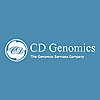
CD Genomics » Microbial Genomics
62 FOLLOWERS
Covers news and articles on microbial genomics, epigenomics, transcriptomics, genomics and more. CD Genomics provides next-generation sequencing, genotyping, and microarray services to pharmaceutical and biotech companies and academia and government agencies.
CD Genomics » Microbial Genomics
3y ago
Organisms live in an ecological context, and pure cultures rarely exist in nature. Microbial communities comprising microecology are one example of systems that are far from being pure culture which makes them dynamic in playing roles in the ecosystem. Despite their abundance and ubiquity, our understanding of microecology, their interactions, and functions lag our knowledge of pure cultures.
In the environment, microecology maintains stability and participate in the biochemical circulation of macronutrients thereby alleviating environmental pollution. Agriculture benefits from it ..read more
CD Genomics » Microbial Genomics
3y ago
Organisms live in an ecological context, and pure cultures rarely exist in nature. Microbial communities comprising microecology are one example of systems that are far from being pure culture which makes them dynamic in playing roles in the ecosystem. Despite their abundance and ubiquity, our understanding of microecology, their interactions, and functions lag our knowledge of pure cultures.
In the environment, microecology maintains stability and participate in the biochemical circulation of macronutrients thereby alleviating environmental pollution. Agriculture benefits from it ..read more
CD Genomics » Microbial Genomics
3y ago
In recent years, studies have been progressively conducted to assess the effect of distinct sampling techniques on the outcomes of fecal microbiome assessment, in order to address this unmet need in the area of microbiome research. These methodology researches are useful for researchers to create quite rational guidelines for the procedure of fecal sampling, handling, and sequencing.
Figure 1. A brief workflow from stool collection to sequencing. (Fricker, 2019)
Process Prior to the Collection of Stool Samples
Since there are various host and environmental variables that can affect our gut mi ..read more
CD Genomics » Microbial Genomics
3y ago
When bacteria, fungi, viruses, and parasites change over time and no longer respond to antibiotics, antimicrobial resistance (AMR) occurs. This makes an emerging issue related to the development and usage of antibiotics. Traditional microbial screening methods for AMR can be very laborious and time-consuming. However, the use of next-generation sequencing (NGS), especially whole-genome sequencing (WGS), can efficiently determine the presence of certain ARGs in microorganisms, discover novel ARGs, determine mobile genetic elements that promote ARG transfer to other microorganisms, and evaluate ..read more
CD Genomics » Microbial Genomics
3y ago
Without previous understanding of organisms, next-generation sequencing (NGS) offers an efficient unbiased approach to determine new coronavirus strains and other pathogens. New variants of the SARS-CoV-2 coronavirus are increasingly concerned about the rapid spread, highlighting the necessity for more sequencing to rapidly identify mutations and limit the risk of new strains. Sequencing was employed early in the epidemic to define the novel coronavirus that caused COVID-19. NGS remains to offer crucial evidence to public health officials, vaccine and drug developers, and researchers, enablin ..read more
CD Genomics » Microbial Genomics
3y ago
Clustered regularly interspaced short palindromic repeats, or CRISPR, is one of the most phenomenal discoveries that paved the way for modern genome screening and editing technologies. CRISPR is a family of DNA found in the genome of prokaryotes, specifically bacteria and archaea. These sequences contain DNA fragments from known bacteriophages that infect the particular prokaryote. Studies have revealed the reason behind these organisms having such sequences is that when a bacteriophage infects the bacteria, they keep a fragment of the infecting DNA and use it to destroy similar bacteriophages ..read more
CD Genomics » Microbial Genomics
3y ago
The Discovery of Hepatitis C Virus
Hepatitis, or the inflammation of the liver, is primarily caused by viral infection. Other significant factors to it include alcohol abuse, environmental contaminants, and autoimmune diseases. It became apparent in the 1940s that there were two major forms of contagious hepatitis. In the 1960s, Hepatitis B and A vaccines were being made but according to Harvey J. Alter, large cases of transfusion-related hepatitis still remained. This led to the identification of an unknown infectious agent that caused the “non-A, non- B” Hepatitis which is the untreated tran ..read more
CD Genomics » Microbial Genomics
3y ago
With the advent of the post-genome era, gene chip and next-generation sequencing have become two important branches of biochemistry and molecular biology technologies.
DNA microarray, also known as gene chip, is a method characterized by high throughput, high efficiency, and high automation. In a gene chip array, a large number of known probe sequences are orderly attached to a solid surface. Fluorescent molecules are labeled on the DNA to be tested, which are then hybridized with the fixed probes. According to the amount of hybridization between the tagged DNA and the probes, the fluorescenc ..read more
CD Genomics » Microbial Genomics
3y ago
Microbial ecology is the study of the relationships of microorganisms with one another and with their environment. Microbial diversity, distribution, abundance, specific interactions, and their impact on ecosystems are explored.
Elected by the scientific journal Nature as one of the technologies to watch for in 2020, single-cell sequencing is a rising technology in single-cell ecology. It refers to the technology of high-throughput sequencing of nucleic acid molecules through whole-genome or transcriptomic amplification at the single-cell level. This technique can reveal the gene structure and ..read more
CD Genomics » Microbial Genomics
3y ago
What is a plasmid?
Plasmids are the small circular or linear double-stranded DNA molecules (ranging from a few to several hundred kilobases) found in bacterial cells but also present naturally in archeae and eukaryotes. The plasmids are not packaged inside a chromosome, and have no distinct 5’ or 3’ beginning or end. They can autonomously replicate independently of the chromosome inside the cell, and provide one or more benefits to the host such as resistance to antibiotics, degradative functions, and virulence. Plasmids also have the ability to transfer from one cell to another during the pro ..read more